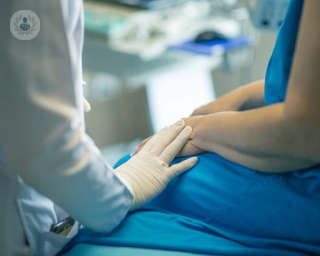Breast-conserving surgery
What is breast-conserving surgery?
Breast conserving surgery is a procedure that some breast cancer patients undergo. It is where an area of cancer is removed from the breast.
Some of the surrounding breast tissue is removed but as much normal tissue as possible is left behind. However, removal of some of the chest wall lining could take place if the cancer is close to it.
It can also be referred to as:
- Breast-sparing surgery
- Wide local excision
- Lumpectomy
- Partial mastectomy
- Quadrantectomy
- Segmental mastectomy

What leads to having breast-conserving surgery?
Breast-conserving surgery may be recommended if:
- The cancer is small compared to your breast size;
- It is in a suitable position in your breast;
- Is in only one area of your breast
What is involved in breast-conserving surgery?
The breast cancer and a border, or margin, of normal breast tissue is removed from all around it. Also, some lymph nodes under the arm could be taken for biopsy reasons.
A pathologist checks the border for cancer cells in a laboratory. If there are none, you are unlikely to need more surgery and there is a lower risk of cancer returning. However, you may need further surgery if the margin around the cancer isn't clear.
How long does it take to recover from breast-conserving surgery?
Hospital recovery after breast-conserving surgery usually takes one to two days. Generally, you can resume your normal activities after two weeks but doctors will advise patients when they can start driving again and when they can go back to work.
Breast-conserving surgery may be followed by radiation therapy.
What are the benefits and risks involved in breast-conserving surgery?
The breast, or breasts, is preserved rather than being fully removed.
Statistically, breast-conservation surgery followed by radiation therapy have similar long-term rates of survival as those who have a mastectomy (breast removal).
Possible complications of breast-conserving therapy can include:
- Temporary breast swelling
- A change in shape or size of the breast, which could lead to surgery on the other breast to make them look similar
- Scar tissue that forms at the incision site can lead to hardness
- Wound infection or bleeding
- Swelling of the arm if lymph nodes were removed
Which specialist performs breast-conserving surgery?
Surgical oncologists perform breast-conserving surgery, biopsies and mastectomies.







